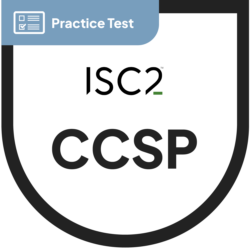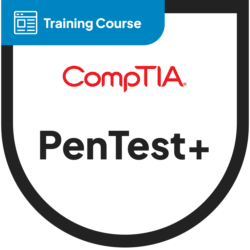IT Security Essentials
Build critical cybersecurity knowledge and skills needed by IT teams to protect enterprise data and reduce organizational risk.
Course Overview
The role of an IT professional is changing. They are being asked to take on more cybersecurity-related tasks, yet often lack the appropriate knowledge and skills around fundamental cybersecurity principles.
The IT Security Essentials course is a five (5) hour, 100% online program designed to teach IT professionals the key foundational concepts of cybersecurity. The course includes video lessons, case studies, lab exercises, and 1:1 interviews with an industry expert. After this course, the practitioner will be more knowledgeable on cybersecurity lexicon, common threats and attacks, and proper mitigation strategies.
- 4 hours on-demand training videos
- Practical, hands-on activities
- 15 question diagnostic exam
- 15 question final exam
- 15 knowledge check questions
- Expert interviews
- Performance Tracker
- Summary Video
- Deep-dive into notable breaches and cyber incidents
Prerequisites
It is recommended to have some background knowledge in IT or computer networking. However, there are no formal prerequisites for this course.
Certifications
For entry-level or transitioning talent, CompTIA’s Security+ is the perfect next step to expand their cybersecurity knowledge and credibility.
Course Outline
Unit 1: Risk, Privacy, and Data Protection – Introduce (or re-introduce) learner to common cybersecurity terminology. Discuss the most important industry words and phrases to create a foundation for further learning.
- Defining Cybersecurity
- CIA Framework
- Defining Risk
- Privileged Access
- Defining Sensitive Data
- Laws, Regulations, and Compliance Initiatives in Cybersecurity
Unit 2: IoT, Cloud, and Critical Networking Protocols – Examine insecure aspects of network and device communication. Highlight the fact that many services and devices are insecure, by default; not designed with security in mind.
- The Network
- IoT Devices
- Cloud Computing
- Passwords
Unit 3: External and Insider Threats and Their Attack Methods – Demonstrate how attackers exploit vulnerabilities. Discuss technical, network-based attacks (MITM, Dos) and non-technical (social engineering).
- Threat Actors
- Third Parties
- Social Engineering
- Man-in-the-Middle
- DoS Attacks
- Malware
Unit 4: Software Tools, IAM, and Incident Response – Discuss common defenses against attackers and bad actors. Discuss technical defenses such as VPNs and network segmentation, but also less technical efforts such as communicating with users and coordinating other teams and business leaders.
- Network Segmentation
- Blacklisting/Whitelisting
- VPN
- Password Security
- Incident Response
- Patch Management
Unit 5: Cybersecurity Communication and Third-Party Management – Interviews with a Director of IT, discussing the major trends in IT and cybersecurity. He also discusses how IT Professionals can coordinate and communicate with the cybersecurity team and help when cybersecurity incidents do occur. Interviews help highlight the ‘soft skills’ needed by IT practitioners.
- Communicating About Cybersecurity
- Writing Cybersecurity Reports
- Connection Between IT and Cybersecurity Teams
- Communicating with Third Parties





